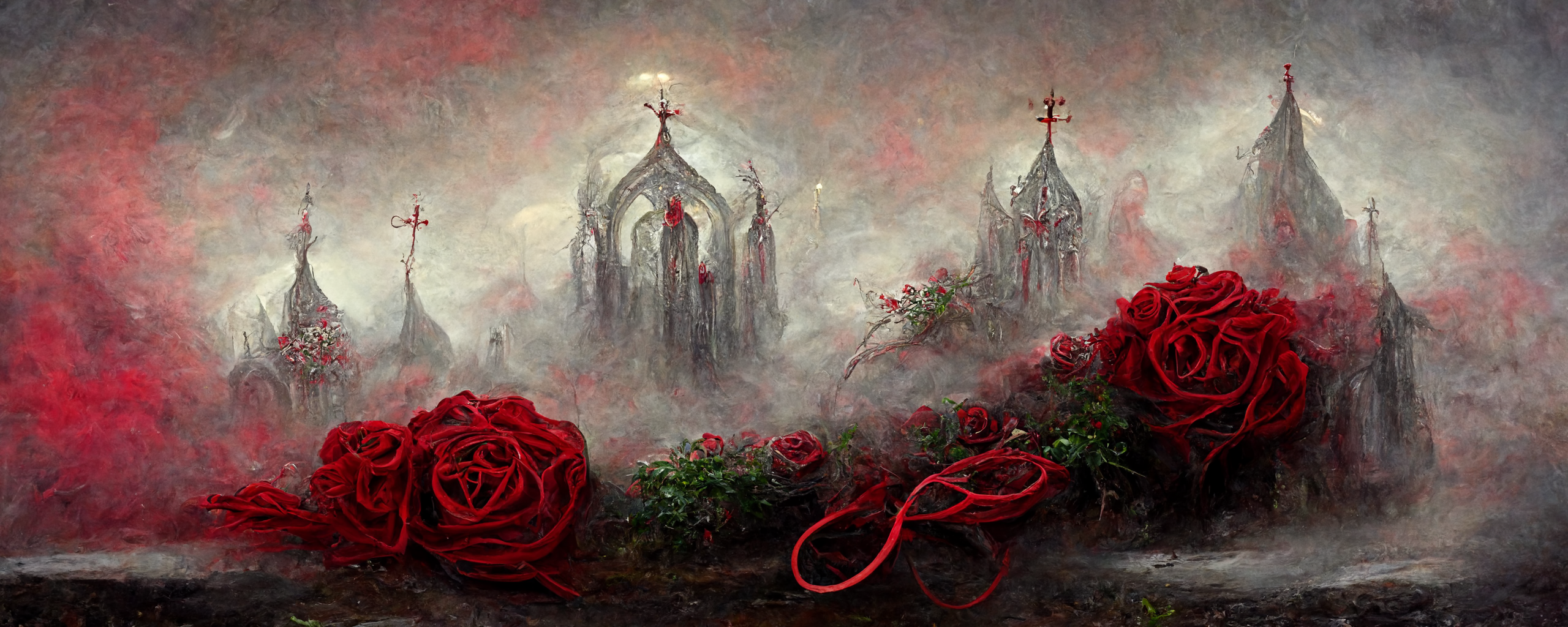Tamaris
Long ago, before the Imperium rose to power, people in Ptolus worshipped the god Tamaris. He embodied the unattainable ideal of male beauty, of love and lust, which were not ruled by mortal laws. Today, it is difficult to understand when he fell into oblivion and his priests disappeared, but a few months ago, he suddenly seemed to be remembered. While he is continuously coming back to people’s attention, researchers try to find ancient texts about the original faith and purpose of the deity.
Depiction
There are few surviving images of Tamaris, so it is hard to say how he was usually depicted. However, some ancient statues show the god as a well-toned young man in the prime of his life. Depending on the function in which he was depicted, they gave him a wineskin or a brush and palette. In his function as the god of lust, they depicted him as rather naked.
Painted representations show him with pale skin, blood-red lips, pronounced musculature and black, curly hair. In such paintings, they often show him surrounded by young priestesses who are at his service. Other common elements of representation are vines, musical instruments, as well as richly decorated buildings.
A celebration of life
Don’t regret something that made you happy.
Never look back to things that didn’t.
To enjoy life in all its facets, without ever regretting the positive moments in a lifetime, is one of the central pillars of the Tamarian faith. Many of his followers gave in to their desires at a whim, without ever thinking about the consequences. They lived in their here and now, and didn’t care about tomorrow. It’s the moment that counts for Tamaris, and missing a moment of joy was considered a sin. Therefore, it is no surprise that his followers took great effort not to miss any joyful experience, no matter how small.
Gluttony and vanity were as much the order of the day within the community as adultery and other sexual debauchery was. While this would cause problems in other communities, within the faith, it led to tight-knitted communities which took care of the tasks at hand together and were bound to each other through the joy of their rituals.
The churches of the deity usually had an attached community center, where children were raised together. In these centers, the community usually also provided healing to those in need, with a specialization to sexually transmitted diseases. The layout and structure of the community led to rumors and whispers that the parents of these children were irresponsible. Shared tasks and responsibilities were such an alien concept to the family-driven society that they looked at the faith of Tamaris with suspicion.
Never deny love
Love knows no time.
If you find love, embrace it.
Hold it dear, as long as it lasts.
Marriage and monogamy were concepts that were alien to the Tamarian faith. Instead of the usual monogamous marriage, they had the “bond of love”, which could include many partners. It represented the emotional bond of the partners involved, as well as the willingness to stand up for that bond.
Children within the faith were often born into such a bond, and it was often impossible to understand who the biological father of a child was. Instead, all partners were considered parents to the child in question. This concept was a thorn in the side of the more traditional social classes, especially since there were no limits or restrictions on the gender of the partners. Some stories even tell that there were all-male or all-female bands.
Sexual relations that arose from a momentary feeling or the desire of the moment were just as common outside the bonds. From this tradition sprang the legend that every follower of Tamaris had to perform sexual services within the church for a time. However, based on the traditional texts of the faith, this assertion is not true.
A lesson in beauty
Learn to see it on the cat’s prowl.
Recognize it in the dance of the girls.
Embrace it in the eyes of your lover.
Beauty is one concept that the Tamarian faith holds dear. Not only did they support artists of the time and provided them with a bed to sleep, materials to work with or food, they tried to preserve works of art wherever they could.
However, Tamaris also teaches that beauty lies not only in art and architecture but also in the people, the city and the nature that surrounds it. Followers of Tamaris seek to discover beauty in all aspects of life and their surroundings. Today, you can trace some of the most beautiful old buildings back to followers of Tamaris.
The new faith
In the course of the last months, the faith suddenly came back to attention. The new priests founded a community house, where they provide healing for prostitutes within the city. While there are two new priests in the city, there are no signs that the original faith is close to restoring, or that there are plans to come back to the traditions that were common in the original church.
While the faith is now growing again, there are a lot of researchers looking for hints, documents and images from the original faith. There is the open question, if a community like the original church is possible in the modern city of Ptolus.





Comments
Author's Notes
Author
This article was written by the creative and talented Davina and edited for world and game use by Graylion in the Shadow War Across Creation. To see more writing and world building by Davina, visit WIRE.